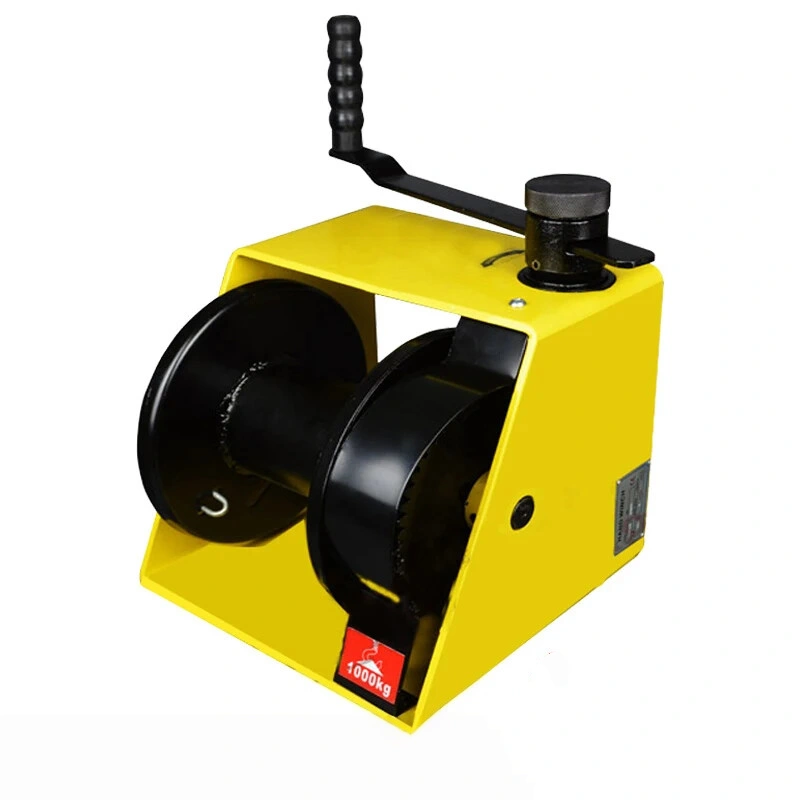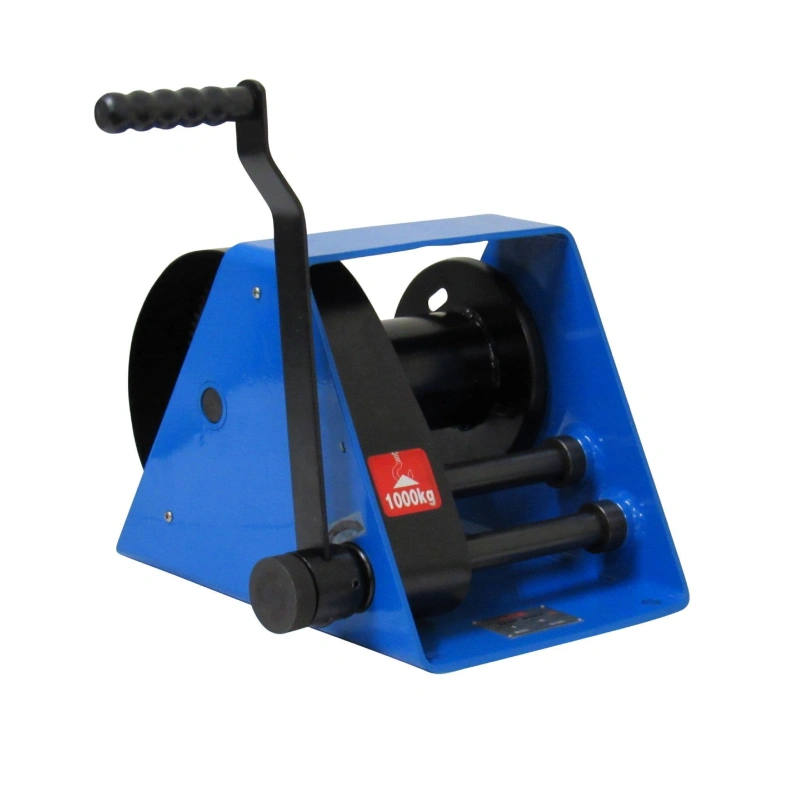You often face a choice between a chain shackle vs anchor shackle when working in lifting or rigging operations. Selecting the right shackle directly impacts workplace safety. In industrial settings, failures caused by improper shackle selection account for up to 28% of lifting-related accidents.
Incident Type | Percentage of Lifting-Related Accidents |
|---|---|
Failures due to improper shackle selection | Up to 28% |
To reduce risk, you should focus on:
Selecting the correct type of shackle
Adhering to working load limits
Ensuring proper alignment and pin security
Powerful Machinery provides certified shackles and chains trusted by professionals worldwide. You can rely on their products for dependable performance in demanding environments.
Key Takeaways
Choose the right shackle type for your lifting needs. Chain shackles excel in straight-line tension, while anchor shackles handle loads from multiple directions.
Always check the working load limit (WLL) before using a shackle. This ensures safety and prevents accidents during lifting operations.
Inspect shackles for wear or damage before each use. Regular maintenance extends the life of your equipment and enhances safety.
Select stainless steel shackles for marine environments. Their corrosion resistance makes them ideal for harsh conditions.
Understand the differences in design. Chain shackles have a narrow D-shape for stability, while anchor shackles feature a rounded bow for versatility.
Chain Shackle
Definition
You use a chain shackle to connect chains, ropes, or other lifting equipment. This type of shackle features a straight-sided body, often called a “Dee” or “D” shackle. Powerful Machinery offers stainless steel shackles and the G210 Shackle, which are built for strength and reliability in tough conditions.
Chain shackles resist corrosion, making them ideal for marine and industrial environments. You rely on these shackles when you need secure load-bearing performance.
Material | Sizes | Type |
|---|---|---|
Galvanized Steel | 1/4”, 5/16”, 8mm, 10mm | D chain shackle |
Stainless Steel | Various | D chain shackle |
Design Features
Chain shackles have a narrow, straight-sided shape. This design keeps the chain aligned and prevents twisting during lifting. You find a screw pin or bolt-type closure, which allows for quick attachment and removal.
The G210 Shackle from Powerful Machinery uses high-quality stainless steel, providing excellent corrosion resistance. Proper sizing and fit are essential for safety and load stability. An improperly sized shackle can lead to point loading, which increases the risk of premature wear and failure.
Tip: Always check the shackle’s size and working load limit before use. This ensures safe lifting and prevents accidents.
Chain shackles undergo advanced manufacturing processes. Closed die forging increases the cross-section, enhancing strength and ductility. Quenching and tempering maximize steel properties, giving you toughness and resilience under repeated loads.
Uses
You use chain shackles in straight-line tension scenarios. These shackles excel when you need to connect chain to chain, or chain to other hardware, without side loading. Common applications include lifting, towing, and securing loads in construction, marine, and industrial settings.
Chain shackles are not suitable for multi-leg slings or situations where the load pulls from different directions.
Shackle Type | Common Use | Typical Load Rating |
|---|---|---|
Chain / Dee Shackle | Connecting gear in bi-directional loads | Varies based on size |
You find chain shackles in certified products that meet international standards. Powerful Machinery’s chain shackles comply with ISO, ASTM, and IMO guidelines, ensuring safety and reliability in global markets.
Standard/Regulation | Description |
|---|---|
International Maritime Organization (IMO) | Guidelines ensuring safety and reliability in marine operations. |
ASTM standards | Specifications for materials and testing methods. |
ISO certifications | International standards for quality and safety. |
US Coast Guard (USCG) standards | Regulations specific to marine safety in the United States. |
European CE marking | Indicates compliance with health, safety, and environmental protection standards for products sold within the European Economic Area. |
You choose chain shackles for their durability, ease of use, and secure performance in demanding environments.
Anchor Shackle
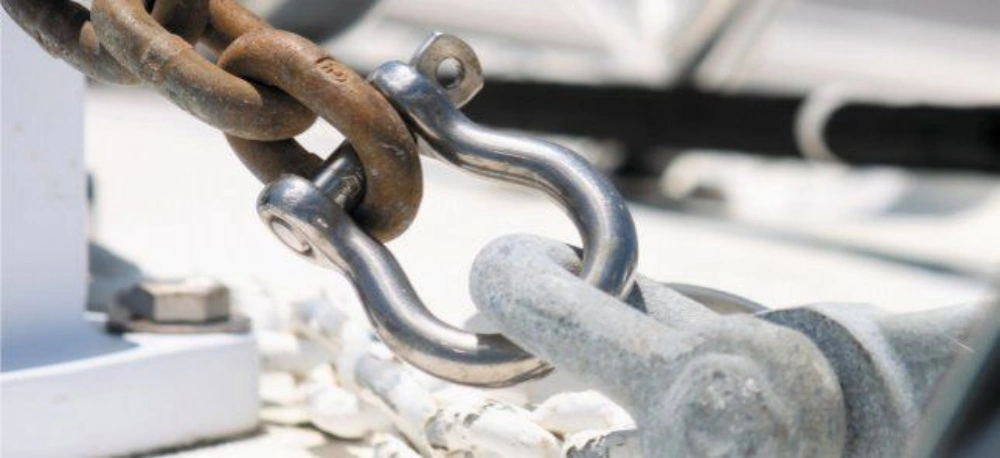
Definition
You use an anchor shackle when you need a versatile connection point for lifting, rigging, or anchoring tasks. This type of shackle features a rounded, “O”-shaped body, which sets it apart from the straight-sided chain shackle.
Powerful Machinery’s G209 Shackle and Stainless Steel Shackles represent top choices for demanding environments. The anchor shackle’s design allows you to connect multiple lines or slings, making it a preferred option for complex rigging setups.
Design Features
The anchor shackle stands out because of its large, rounded bow. This shape lets you handle loads from several directions without compromising safety. You can attach more than one sling or rope to the same shackle, which increases flexibility on the job site.
The screw pin design on the G209 Shackle makes installation and removal quick and secure. Stainless steel construction ensures excellent corrosion resistance, especially in marine environments.
Note: Always inspect the pin and body of your anchor shackle before each use. Proper maintenance extends the life of your equipment and keeps your operations safe.
Here’s how anchor shackles compare to chain shackles:
Feature | Anchor Shackles | Chain Shackles (D Shackles) |
|---|---|---|
Shape | Rounded, larger ‘O’ design | D-shaped, narrower bow |
Load Direction | Can carry loads from various directions | Designed for in-line tension only |
Side Loading | Can handle without substantial issues | Should not be side-loaded |
Strength | Reduced due to the larger loop design | Stronger in in-line tension applications |
Applications | Versatile for various rigging setups | Specialized for specific configurations |
Uses
You rely on anchor shackles for tasks that require handling loads from multiple directions. The unique shape lets you attach several lines or slings, which is essential in complex rigging or anchoring systems.
You often see anchor shackles in marine applications, such as securing boats or connecting anchor chains. In industrial settings, you use them for lifting, towing, and connecting equipment where the load direction may change.
Anchor shackles work well when you need to:
Manage multiple directions of pull
Attach several lines to a single anchor point
Handle changing load directions in marine or construction projects
Use Case | Description |
|---|---|
Marine Applications | Anchor shackles are commonly used in marine settings for securing boats and anchoring. |
Industrial Uses | They are utilized in various industrial applications, particularly for lifting tasks. |
You choose anchor shackles when you need flexibility, reliability, and certified performance. Powerful Machinery’s anchor shackles meet international standards, giving you confidence in every lift or anchor operation.
Chain Shackle vs Anchor Shackle: Differences
When you compare a chain shackle vs an anchor shackle, you notice clear differences in shape, load direction, versatility, and strength. Understanding these distinctions helps you select the right shackle for your lifting or rigging needs.
Powerful Machinery offers both types of shackles, including the G210 Chain Shackle and G209 Anchor Shackle, each designed for specific applications.
Shape
The most obvious difference between a chain shackle and vs anchor shackle is their shape. Chain shackles have a narrow, D-shaped body, which keeps the load aligned and prevents twisting.
Anchor shackles feature a larger, rounded bow, often described as an “O” shape. This design lets you connect multiple slings or lines to a single point.
Shackle Type | Bow Shape | Load Handling Capability |
|---|---|---|
Anchor Shackles | Larger, round ‘O’ | Can handle loads from multiple directions and be side-loaded, suitable for multi-leg connections. |
Chain Shackles | Narrow D-shaped | Designed for in-line tension, it should not be side-loaded to prevent twisting or bending. |
Tip: Always match the shackle shape to your application. The right shape improves safety and efficiency.
Load Direction
Load direction plays a critical role when you choose between a chain shackle vs anchor shackle. Chain shackles work best in straight-line tension scenarios. You use them when the force pulls directly along the axis of the shackle.
Anchor shackles, with their rounded design, support loads from various angles. You rely on anchor shackles for applications where the direction of pull changes or where you need to connect multiple lifting devices.
Chain shackles are best for applications needing a straight line of pull.
Anchor shackles are preferred for situations with multiple or changing load directions.
Chain shackles (D-shackles) are designed for in-line tension and support a single lifting device.
Anchor shackles (bow shackles) can accommodate multiple hooks or slings due to their rounded shape, allowing for support from various directions.
Note: Using the wrong shackle for your load direction can lead to equipment failure or safety hazards.
Versatility
When you consider versatility, anchor shackles offer more flexibility than chain shackles. You can use anchor shackles in complex rigging setups, multi-leg slings, and marine applications. Their rounded shape allows for easy connection of several lines or slings.
Chain shackles, on the other hand, excel in straightforward, single-line connections. You find chain shackle vs anchor shackle comparisons most useful when you need to decide between specialized and general-purpose rigging.
Anchor shackles adapt to changing load directions and multi-point connections.
Chain shackles provide secure, stable connections in simple, straight-line setups.
You see these differences reflected in Powerful Machinery’s product range. The G209 Anchor Shackle is ideal for marine and industrial tasks requiring multi-directional load handling. The G210 Chain Shackle suits lifting operations where alignment and stability are critical.
Strength
Strength is another factor you must evaluate in the chain shackle vs anchor shackle decision. Chain shackles generally offer higher strength in straight-line tension because of their narrow design. You use them for heavy lifting where the load remains aligned.
Anchor shackles, while versatile, may have slightly reduced strength due to their larger bow. However, they compensate by handling loads from multiple directions without compromising safety.
Some carbon-type shackles, like CM Super Strong shackles, have strength ratings up to 50% higher than comparable-sized carbon shackles.
Powerful Machinery’s stainless steel shackles meet or exceed international standards, ensuring reliable performance in demanding environments.
Always check the working load limit and certification before using any shackle. Proper selection ensures safety and extends the life of your equipment.
Summary Table: Chain Shackle vs Anchor Shackle
Feature | Chain Shackle (G210) | Anchor Shackle (G209) |
|---|---|---|
Shape | Narrow D-shaped | Large, rounded bow |
Load Direction | Straight-line tension only | Multi-directional load handling |
Versatility | Best for single-line connections | Ideal for multi-leg slings |
Strength | Higher in aligned loads | Slightly reduced, but flexible |
Application | Lifting, towing, securing | Marine, rigging, anchoring |
You encounter different types of shackles in the field, but knowing the differences between a chain shackle and vs anchor shackle helps you make informed decisions. When you understand how these different types of shackles perform, you improve safety and efficiency in every project.
Choosing the Right Shackle
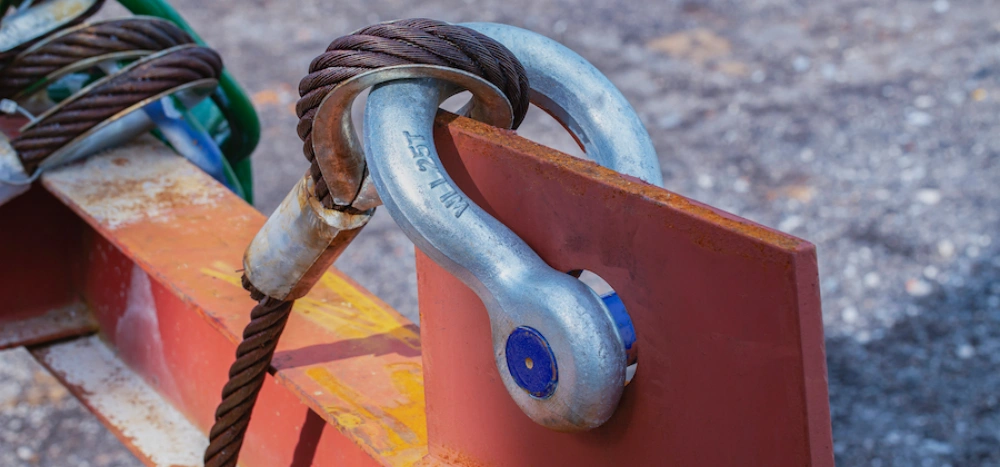
Application Scenarios
You face many choices when selecting a shackle for your lifting or rigging tasks. The right option depends on your specific application. If you work in construction, you often need a shackle that can handle straight-line tension.
In marine environments, you may require a shackle that supports loads from multiple directions. Powerful Machinery offers both chain shackles and anchor shackles, each designed for different scenarios.
Shackle Type | Shape | Load Capacity | Suitable Applications |
|---|---|---|---|
Anchor Shackles | Bow-shaped | Lower overall weight tolerance | Supports heavier payloads from various directions, accommodates wider lifting straps |
Chain Shackles | D-shaped | Higher working load | Suitable for moderate to heavy loads lifted in line, not recommended for non-vertical lifting |
You should match the shackle type to your job requirements. For multi-leg slings or changing load directions, anchor shackles work best. For direct connections and straight pulls, chain shackles provide reliable performance.
Decision Factors
When you choose a shackle, several factors influence your decision. You must consider weight capacity, material suitability, and pin type. Powerful Machinery’s shackles come in stainless steel and galvanized steel, meeting the needs of harsh environments and heavy-duty tasks.
Factor | Description |
|---|---|
Weight Capacity | The maximum weight load the shackle can support, crucial for safety and preventing overload failures. |
Material Suitability | Different materials offer unique benefits; selection depends on the application environment. |
Pin Type | Determines ease of use and security; common types include screw pins and bolt-type pins. |
Weight Capacity: Always check the working load limit (WLL) and ensure it exceeds your maximum anticipated load.
Material Suitability: Stainless steel resists corrosion, making it ideal for marine use. Alloy steel suits heavy lifting.
Pin Type: Screw pins allow quick installation. Bolt-type pins offer extra security.
Always exceed the expected load and factor in dynamic loads such as shock and vibration. Environmental conditions matter; select shackles that withstand corrosion, temperature, and chemical exposure.
Safety Tips
You must prioritize safety when using shackles in any environment. Follow these tips to reduce risk and ensure reliable operation:
Inspect Before Use: Check each shackle for wear or damage before every lift.
Use the Right Shackle for the Job: Select a shackle that matches your load and never exceed its working load limit.
Avoid Sudden Movements: Maintain steady lifting speeds to prevent stress and failure.
Connect Multiple Shackles to the Body, Not the Pin: This distributes the load evenly.
Never side-load a shackle, as this reduces its working load limit.
Always respect the working load limit stamped on the shackle.
Powerful Machinery’s shackles meet international certifications such as ISO, RINA, and BV. These standards guarantee quality and safety for your lifting and rigging operations.
Shackle Pros and Cons
Chain Shackle: Pros
You benefit from chain shackles when you need reliable performance in straight-line tension applications. Powerful Machinery’s chain shackles, including the G210 model, deliver high strength and durability. You find these shackles easy to install and remove because of their screw pin design.
Stainless steel construction resists corrosion, which makes it suitable for marine and industrial environments. You can select from a wide range of sizes to match your specific load requirements. Chain shackles maintain alignment, which reduces the risk of twisting during lifting operations.
High strength in straight-line tension
Simple installation and removal
Excellent corrosion resistance
Wide range of sizes available
Maintains load alignment
Tip: Use chain shackles for lifting, towing, and securing loads where the force remains in a single direction.
Chain Shackle: Cons
You encounter some limitations with chain shackles in multi-directional load scenarios. These shackles are not designed for side loading. If you use them in applications where the load pulls from different angles, you risk twisting or bending the shackle.
You should avoid using chain shackles in multi-leg sling setups or complex rigging systems.
Not suitable for multi-directional loads
Should not be side-loaded
Limited versatility in complex rigging
Anchor Shackle: Pros
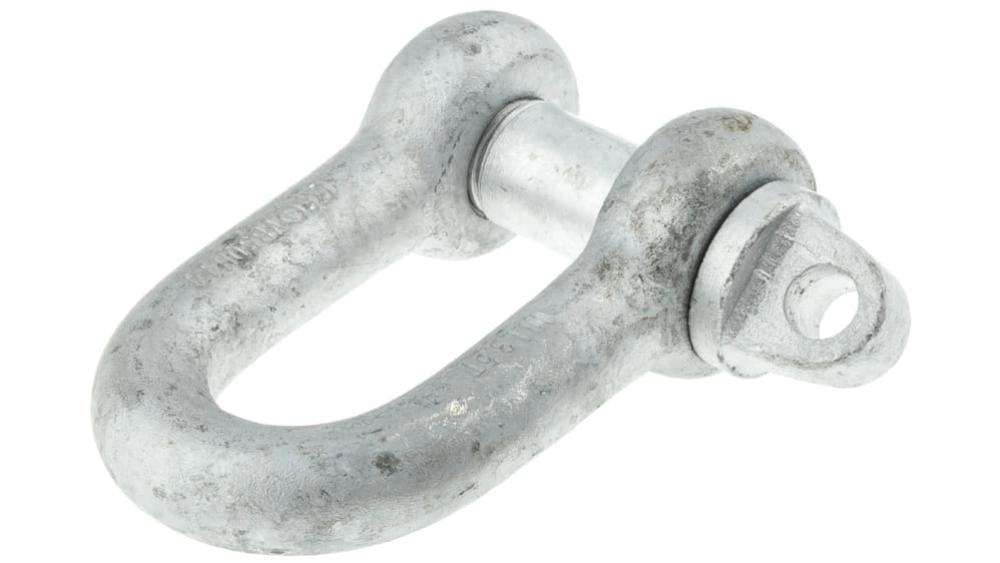
You gain flexibility with anchor shackles, especially in marine and multi-directional load handling. Powerful Machinery’s G209 anchor shackles feature a rounded bow, which allows you to connect multiple slings or lines. You can use these shackles for lifting, towing, tie-downs, and suspension tasks.
The combination of bolt, nut, and cotter pin enhances security and minimizes accidental disengagement. Anchor shackles suit permanent or semi-permanent installations and comply with regulations from OSHA and ANSI.
Benefit | Description |
|---|---|
Enhanced security | Bolt, nut, and cotter pin minimize accidental disengagement |
Long-term use | Suitable for permanent or semi-permanent installations |
Versatility | Applicable for lifting, towing, tie-downs, and suspension |
Regulatory compliance | Meets OSHA, ANSI, and other standards for critical applications |
Note: Anchor shackles excel in situations where you need to manage loads from several directions.
Anchor Shackle: Cons
You should consider some limitations when using anchor shackles in straight-line tension scenarios. D shackles work best in straight-line tension and must not be subjected to side loading, which can cause twisting or bending of the bow.
Round pin shackles are not ideal for overhead lifting or multi-sling configurations, especially under dynamic loading conditions.
D shackles require straight-line tension and should not be side-loaded
Round pin shackles are not recommended for overhead lifting or multi-sling setups
Dynamic loading can stress the cotter pin in round pin shackles
Always match the shackle type to your application to ensure safety and optimal performance.
Powerful Machinery Shackles and Chains
Stainless Steel Shackles
You find Powerful Machinery’s stainless steel shackles in demanding environments. These shackles resist corrosion and provide reliable strength for lifting, towing, and securing tasks. You benefit from their smooth finish and robust construction, which makes installation easy and safe.
Powerful Machinery tests every shackle in a Lloyd’s Register certified laboratory. You can trust their products to meet international standards and support loads up to 160 tons.
Certification Type | Details |
|---|---|
Testing Laboratory | In-house Lloyd’s Register certified testing laboratory |
Compliance | Products meet international standards |
Membership | Member of the Associated Wire Rope Fabricators (AWRF) |
Load Capacity | Up to 160 tons of load capacity |
You should select stainless steel shackles for marine, industrial, and construction projects where durability and safety matter most.
Anchor Chains
You rely on Powerful Machinery’s anchor chains for secure anchoring in maritime operations. These chains withstand harsh conditions and prevent vessel drift. You choose from stud link, dock fender, barge, log boom, and studless chains.
Each type offers high tensile strength and corrosion resistance. You use anchor chains for lifting, towing, tie-down, hoisting, and pulling operations.
Lifting operations
Towing applications
Tie-down tasks
Hoisting activities
Pulling operations
You ensure vessel stability and safety by selecting certified anchor chains for your marine projects.
Studless Anchor Chain
You gain flexibility and strength with Powerful Machinery’s studless anchor chains. These chains are about 10% lighter than studded chains, yet they maintain the same breaking strength.
You avoid issues like loose studs or cracks at welds. Manufacturing and inspection become easier. You use studless anchor chains in marine environments where weight and handling matter.
Lighter than studded chains
Same breaking strength as studded chains
No loose studs or weld cracks
Easier manufacturing and inspection
You improve efficiency and reliability in anchoring systems by choosing studless anchor chains.
G209 and G210 Shackles
You select G209 and G210 shackles for their advanced design and certified performance. The G210 shackle features forged alloy pins, a screw pin chain design, and a permanently marked working load limit. You use G210 shackles in environments with temperatures from -40°C to 204°C.
The G209 shackle uses high-quality carbon or alloy steel and a bow-type design. You benefit from a test load twice the ultimate working load and a breaking load four times the ultimate working load.
Feature | G210 Shackle | G209 Shackle |
|---|---|---|
Material | Forged, quenched, alloy pins | Carbon structural steel or alloy steel |
Load Capacity | Working Load Limit is permanently shown | Test load is 2x ultimate working load |
Design Type | Screw pin chain shackle | Bow type |
Special Features | Fatigue rated, RFID for 25t+ | Breaking load is 4x ultimate working load |
Temperature Range | -40°C to 204°C | — |
You achieve safe, efficient lifting and rigging by choosing certified G209 and G210 shackles for your operations.
Conclusion
You now understand the key differences between chain shackles and anchor shackles. The table below highlights their main features:
Feature | Anchor Shackle | Chain Shackle |
|---|---|---|
Shape | Larger, rounded ‘O’ shape | Narrow ‘D’ shape |
Load Capacity | Handles loads from multiple directions | Primarily designed for in-line loads |
Strength | Reduced overall strength due to shape | Higher strength for direct loads |
Applications | Versatile, can handle larger straps | Best for high loads in a straight line |
Sideload Resistance | Good resistance to sideloads | Vulnerable to twisting and bending |
You should always choose certified shackles and chains. Powerful Machinery provides products that meet strict safety standards, including ASME B30.26, and supplies test certificates for every order. When you select the right shackle, you help prevent injuries and costly accidents. Remember these safety tips:
Match the shackle design to your application.
Never exceed the safe working load.
Use safety wire to secure pins.
With over 2.6 million workplace injuries reported in 2023, your equipment choices matter. Make informed decisions and trust Powerful Machinery for reliable, certified solutions.
FAQ
What is the main difference between a chain shackle and an anchor shackle?
You see the main difference in their shape and load handling. Chain shackles have a narrow D-shape for straight-line tension. Anchor shackles feature a rounded bow, allowing multi-directional loads.
How do I choose the right shackle size for my application?
You should check the working load limit and match the shackle size to your equipment and load requirements. Always refer to manufacturer specifications for safe operation.
Tip: Oversizing increases safety and reduces wear.
Can I use stainless steel shackles in saltwater environments?
You can use stainless steel shackles in saltwater. Their corrosion resistance makes them ideal for marine applications. Powerful Machinery’s stainless steel shackles perform reliably in harsh conditions.
Material | Saltwater Suitability |
|---|---|
Stainless Steel | ✅ Excellent |
Galvanized Steel | ⚠️ Good |
Are the Powerful Machinery certified for safety?
You receive shackles that meet international standards like ISO, RINA, and BV. Powerful Machinery provides test certificates for every order, ensuring safety and compliance.
What maintenance steps should I follow for shackles and chains?
You inspect shackles and chains before each use. Clean them regularly, check for wear or deformation, and store them in a dry place. Replace any damaged components immediately.
Regular maintenance extends equipment life and improves safety.

